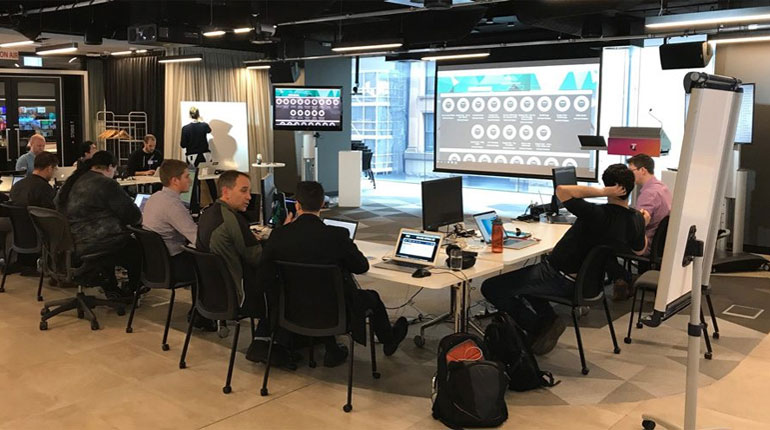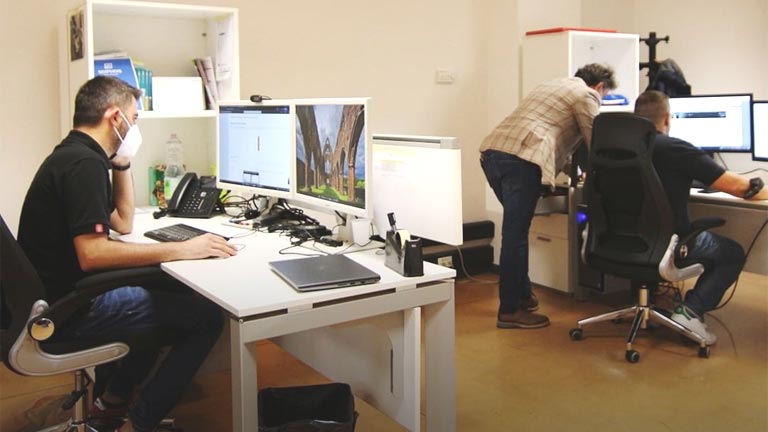What is Kubernetes?
Kubernetes is simply an open-source container orchestration tool that was originally developed by Google. In simple words, Kubernetes manages containers from some other technology or applications that are made up of thousands of containers. Kubernetes helps you manage containers in different deployment environments like physical machines, cloud environments, or even hybrid deployment environments.
What problems do Kubernetes solve?
The rise of microservices accelerated the usage of container Technology such as Kubernetes. This is because the containers are the perfect host for small independent applications like microservices.
Containers that are deployed across multiple environments using self-made tools can be really complex and sometimes even impossible. Because of this reason specific scenario costs are needed for container orchestration technologies. This is where orchestration tools like Kubernetes come into play.
Kubernetes will guarantee you the following features:
- High availability and no downtime: high availability means that your app doesn’t suffer from downtime issues and will be always accessible by the users.
- High performance & Scalability: Your application loads fast and your users get very high response rates
- Disaster recovery: During isolated events like natural disasters, terror attacks, or explosions. The server center can get affected. In this scenario, the infrastructure has to have some kind of mechanism to pick up the dialler data and to restore it to the latest state without affecting the data of the application. The containerized application can run from the latest state after the recovery.
The basic architecture of Kubernetes:
Master Nodes and Worker Nodes:
The Kubernetes cluster is made up of master nodes. These master nodes are connected to a couple of worker nodes where each node has a Kubelet process. Kubelet is a Kubernetes process that makes it possible for the cluster to talk to each other. It also allows the cluster to execute certain tasks on those nodes like running application processes.
Each worker node has docker containers of different applications deployed on it. Hence, depending on how the workloads are distributed, you would have several numbers of Docker containers running on worker nodes.
Whereas, the master node runs several Kubernetes processes that are necessary to run and manage clusters properly. One of such processes is an API server which also is a container. An API server is an entry point to the Kubernetes cluster. This is the process where different Kubernetes clients interact with. This includes the User Interface (UI) if you are using the Kubernetes dashboard, API when you use scripts that automate a specific technology, and command-line tools.
Controller Manager:
Another process that runs on master nodes is a controller manager that virtually keeps track of everything that is happening with the cluster. Another one is the scheduler that is responsible for scheduling containers on different nodes based on the workflow and the available server resources on each node. This is an intelligent process that decides on which worker node the next container should be scheduled based on the available resources on those worker nodes.
Etcd Key-Value Storage:
Another important component of the whole cluster is etc key-value storage. This storage holds the time of the current state of the Kubernetes cluster. So, it has all the configuration data inside and all the status data of each node inside it.
Virtual Network:
Virtual Network is technically the very important component of Kubernetes. Virtual Network enables note master nodes to interact with each other. In simple words, a virtual network turns all the nodes inside of the cluster into one powerful machine that has the sum of all the resources of the individual nodes.
When compared to all these, worker nodes have the most load. This is because they are running the applications inside of it. Whereas master nodes will only run just a handful of master processes as seen in the above diagram. However, a master node is much more important than the individual worker nodes. If you lose access to the master node, you will not be able to access the cluster anymore. So in production environments, you need to have at least two masters inside of your Kubernetes cluster.
Why is Kubernetes the Future of Cloud Computing?
Although fairly new technology, a large array of concepts it gives us aren’t. Hence, Kubernetes can be a highly essential part of the future of computing. However, you should have the resources on board who have technical expertise in container management. If your in-house team lacks the resources who are skilled in container orchestration technologies, it’s always better to hire programmers in India, the hot favourite of clients who seek developmental services in an economical way.
In the near future, Kubernetes will become an end-to-end that can easily manage containers, applications, legacy processes, VMs, etc.





